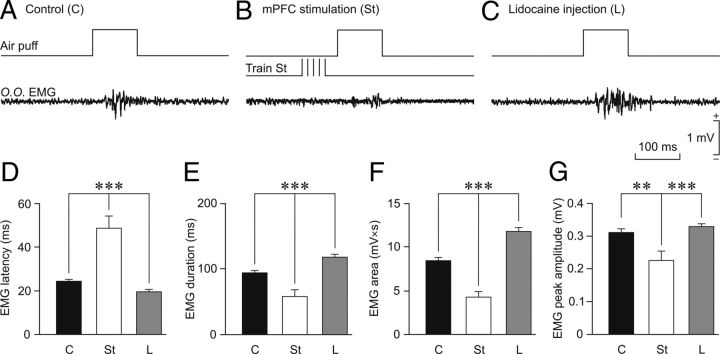Figure 5.
Effects on reflexively evoked eyeblinks of train stimulation of, or local lidocaine administration into, the rmPFC. A–C, Representative recordings of the electromyographic activity of the orbicularis oculi muscle (O.O. EMG) evoked by air-puff stimulation (100 ms, 3 kg/cm2) of the ipsilateral cornea. Each trace is the average of 5 single recordings. B, Moment of train stimulation (Train St). C, Lidocaine (L) was administered 30 min before air-puff stimulation. D–G, Quantitative analysis of EMG collected data for the three experimental situations: control (C), rmPFC stimulation (St), and lidocaine administration into the rmPFC (L). The after parameters were quantified: eyeblink latency (D, in ms for the start of EMG activation), eyeblink duration (E, in ms for EMG activation), integrated EMG area (F, in mV × s), and EMG peak amplitude (G, in mV). Significant differences are indicated: **p < 0.01; ***p < 0.001, one-way ANOVA.

